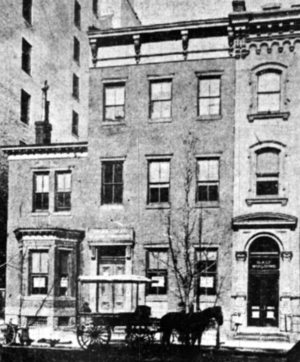Spanish Treaty Claims Commission facts for kids
The Spanish Treaty Claims Commission was a special group set up by the United States government. It was created after the Spanish–American War ended in 1898. Its main job was to handle money claims, or requests for payment, from American citizens. These citizens believed Spain owed them money for things that happened during the war. The Commission worked from 1901 to 1910. It looked at claims worth almost $65 million but ended up paying out less than $1.5 million.
Contents
Why the Commission Was Formed
After the Spanish-American War, the United States and Spain signed a peace agreement called the 1898 Treaty of Paris. One important part of this treaty said that the United States would be responsible for paying any claims that its own citizens had against Spain. This meant that if an American citizen felt Spain owed them money for damages or losses, the U.S. government would handle it. So, the Commission had to act almost like Spain's lawyer, defending against claims made by its own people.
Who Were the Commissioners?
The first people chosen for the Commission were picked by President William McKinley in 1901. They were like the judges of this special court.
- William E. Chandler from New Hampshire was chosen as the president of the group.
- Other original members included Gerrit J. Diekema from Michigan, James P. Wood from Ohio, William Arden Maury from Washington, D.C., and William L. Chambers from Alabama.
Over time, some members changed. For example, when Mr. Diekema left in 1907, Harry K. Daugherty took his place. When Mr. Chandler resigned, Mr. Wood became the new chairman, and Roswell P. Bishop joined the Commission.
The President also chose a special lawyer, William E. Fuller, to defend against the claims. He worked from 1901 to 1907. Later, William Wallace Brown took over this important role.
What Kinds of Claims Were Made?
American citizens had six months to tell the Commission about their claims. It was often hard to figure out if a claim was fair because many witnesses were in Cuba or Spain, not in the United States. Also, officials in Spain were not always helpful at first.
Some claims were about people being hurt.
- About $279,750 was paid for personal injuries to U.S. citizens. These injuries usually happened when Spanish military authorities held Americans because they thought they were helping Cuban rebels. This was against an old agreement between the two countries called Pinckney's Treaty.
Most of the money paid by the Commission was for land, animals, or other property that Spain had taken. However, if the damage was part of normal war actions, the claims were usually not paid. For example, many claims were made for sugar cane fields that were burned during the fighting. Almost all of these claims were turned down.
The USS Maine Claims
One very famous event was the sinking of the USS Maine warship in the harbor of Havana, Cuba on February 15, 1898. Over 150 claims, totaling more than $2.8 million, were made by naval officers, sailors, or their families who were affected by this disaster. However, the Commission turned down all these claims. They decided that international law meant a country wasn't responsible to individual military officers for such events. Instead, these types of claims were considered to be for the United States as a whole, not for individual people.
In the end, the Commission paid out a total of $1,387,845.74 for all the approved claims.



